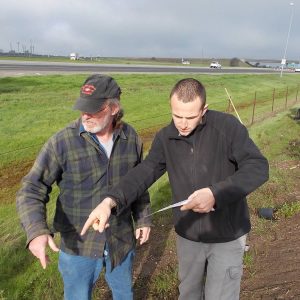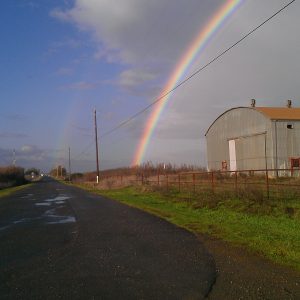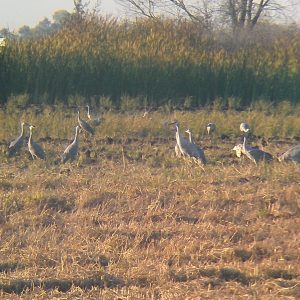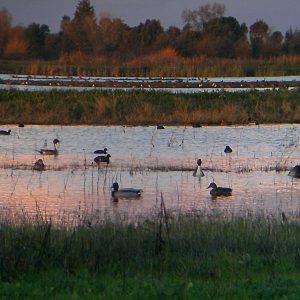Very little has changed here since my last post. The wet season is in full force here and my duties have shifted to mainly office work. I have re-entered the realm of GIS. It is definitely a good thing I am doing this work because despite having taken a GIS course less than a year ago, it seems I have already fallen out of the loop. Although the office work is not quite as appealing to me as the wonderful amazing superb field work I get to participate in, this rainy cold weather has also caused a dramatic increase in our wintering bird population numbers. Tens of thousands of geese, ducks, and cranes have arrived here at the Cosumnes River Preserve. The bird watching is in full swing and is reflected in the survey numbers we have recorded in our monthly bird counts.
- Interpreting our hedgerow layout plan to ensure diversity
- Briefing our volunteers on our goals for the day and what to expect at the work site
- A momentary break in the rain revealed this stunning display of color.
- These sandhill cranes are a few of the many using our preserve as a winter resort. Greater sandhill cranes are federally endangered (around 10,000 left in the world) while the lessers are more common. Both subspecies use our preserve but differentiation can be tricky.
- This is just one of our many ponds specifically managed for ducks.
Occasionally, we have still been experiencing “nice” days here and there. These momentary breaks in the rain provide much needed outdoor work time. I was fortunate enough to have a group of volunteers assist me with a hedgerow planting that I have been working on (weather permitting). With the help of the volunteers, we were able to plant a combination of 180 native shrubs along one of our properties which borders an interstate. The planting will serve as bird habitat for passerine species as well as a “trash rack” to intercept pieces of garbage blowing off of the roadway. With Christmas right around the corner, many of our employees are taking time off for vacation. I’ll be looking forward to spending some time with family as well. Merry Christmas!!


















